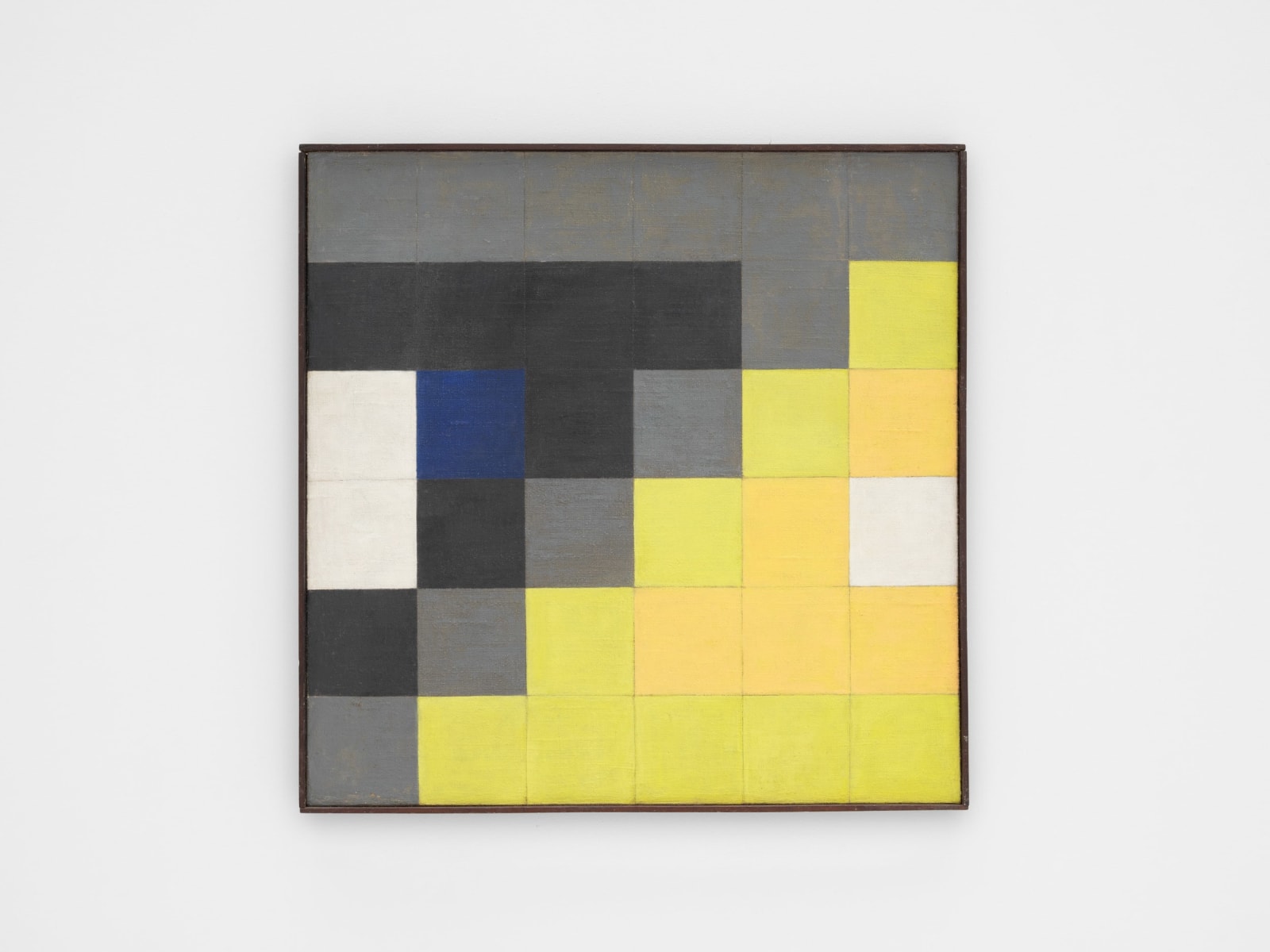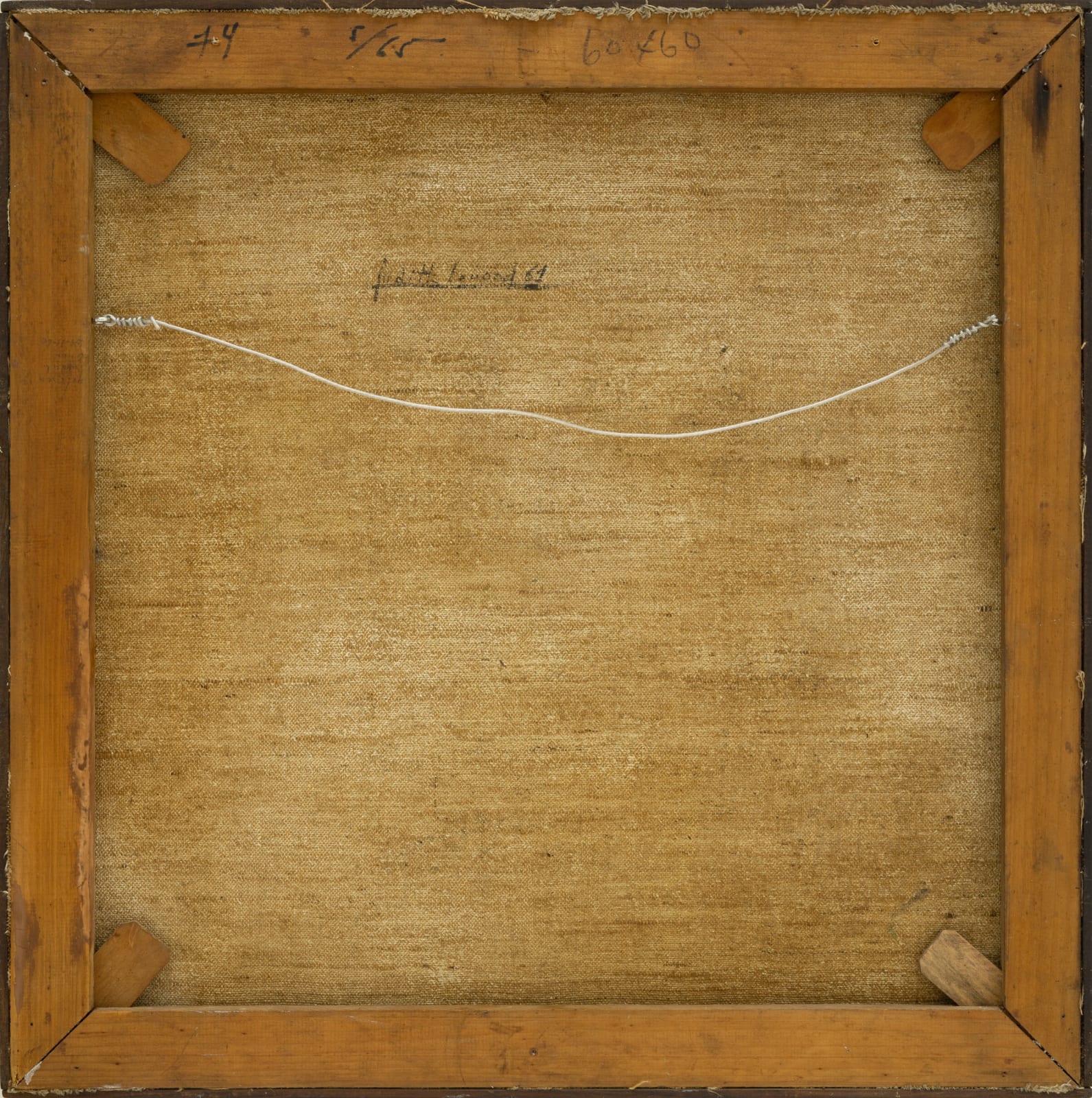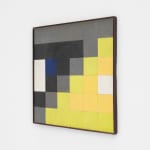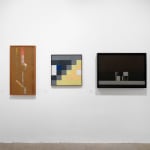Judith Lauand Brazilian, 1922-2022
Untitled, 1957/61
Gouache & acrylic on canvas
60 x 60 cm
23 5/8 x 23 5/8 in
23 5/8 x 23 5/8 in
Further images
Joining Grupo Ruptura in 1955, Lauand developed her practice within the bounds of their geometric language, working with precise sequences and mechanical order. Her early concrete paintings reflect the group’s...
Joining Grupo Ruptura in 1955, Lauand developed her practice within the bounds of their geometric language, working with precise sequences and mechanical order. Her early concrete paintings reflect the group’s rational and cerebral approach, though this is offset by her embrace of material textures and brushstrokes that allow the calculated compositions to retain a human touch. Amongst the key figures of Brazilian Concretism, Lauand’s work is often uniquely characterised by a sensibility towards contradiction and poetic deviation. Forms are held in tension across the picture plane within mathematical linear structures, frequently destabilised and animated by decisive ruptures to her pattern.
This painting was given as a wedding gift to the leading Brazilian art critic of the time, Aracy Amaral, in 1958. Amaral invited Lauand to return and sign the work at a later date. A rare example of her early concrete painting, it is a precursor to an extended series of Xadrez (chess) paintings produced in the 1970s, whose geometric compositions pared down her concretism to its most minimal elements. The renowned critic (former director of MASP - São Paulo Museum of Art) Walter Zanini said of this series in 1984: "the most powerful branch of her approach to vision is the series she divides into a checkerboard shapes. She articulates color tones either in contrast or in harmonious coexistence, always motivated by the idea of creating maximum vibratory potential between the tones."
This painting has been included in important retrospectives of Lauand's work, including the major exhibition at Museum of Art of São Paulo Assis Chateaubriand (MASP), celebrating the artist's 100th birthday in 2022. It is presently included in the exhibition Some May Work as Symbols at Raven Row, London, alongside Brazil's most influential modernists including Rubem Valentim, Willys de Castro, Lygia Clark, Hélio Oiticica and Alfredo Volpi. In 2024, Lauand's work will also be celebrated in the 60th International Exhibition of La Biennale di Venezia, curated by Adriano Pedrosa, as he seeks to re-centre pivotal artists from the global south.
This painting was given as a wedding gift to the leading Brazilian art critic of the time, Aracy Amaral, in 1958. Amaral invited Lauand to return and sign the work at a later date. A rare example of her early concrete painting, it is a precursor to an extended series of Xadrez (chess) paintings produced in the 1970s, whose geometric compositions pared down her concretism to its most minimal elements. The renowned critic (former director of MASP - São Paulo Museum of Art) Walter Zanini said of this series in 1984: "the most powerful branch of her approach to vision is the series she divides into a checkerboard shapes. She articulates color tones either in contrast or in harmonious coexistence, always motivated by the idea of creating maximum vibratory potential between the tones."
This painting has been included in important retrospectives of Lauand's work, including the major exhibition at Museum of Art of São Paulo Assis Chateaubriand (MASP), celebrating the artist's 100th birthday in 2022. It is presently included in the exhibition Some May Work as Symbols at Raven Row, London, alongside Brazil's most influential modernists including Rubem Valentim, Willys de Castro, Lygia Clark, Hélio Oiticica and Alfredo Volpi. In 2024, Lauand's work will also be celebrated in the 60th International Exhibition of La Biennale di Venezia, curated by Adriano Pedrosa, as he seeks to re-centre pivotal artists from the global south.
Provenance
Gifted from the artist to Aracy AmaralPrivate collection, São Paulo
Exhibitions
Some May Work as Symbols: Art Made in Brazil, 1950s–70s, Raven Row, London, UK (2024)Judith Lauand: Desvio Concreto, Museu de Arte de São Paulo Assis Chateaubriand (MASP), São Paulo, Brazil (2022-23)
Judith Lauand: Brazilian Concrete Abstractions, Driscoll Babcock Galleries, New York, US (2017)
Publications
Judith Lauand: Desvio Concreto, exhibition catalogue (São Paulo: Museu de Arte de São Paulo Assis Chateaubriand, 2022), pl. 138.Join our mailing list
* denotes required fields
We use cookies on our website to improve your experience. You can find out why by reading our Privacy Policy.
By continuing to browse our site you agree to our use of cookies.







